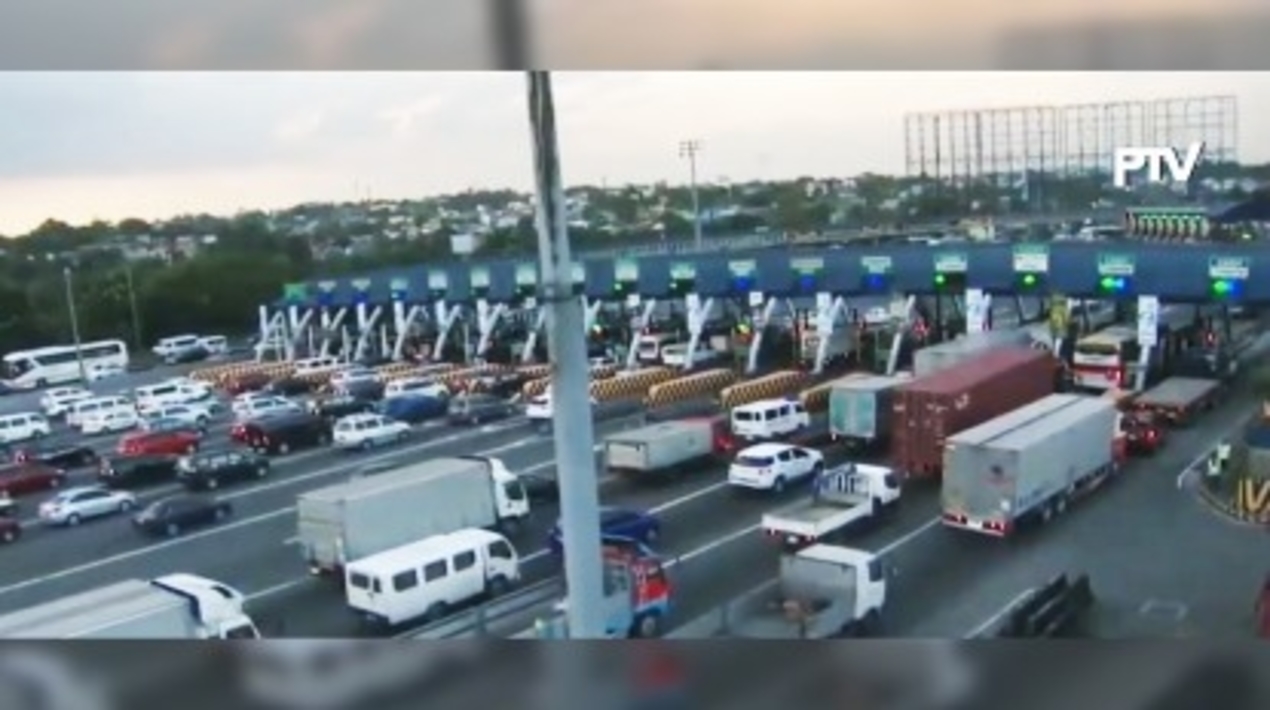
The Department of Transportation (DOTr) is all set to conduct testing of cashless transactions in its tollways in a bid to boost the interoperability of payment systems.
In a statement, the transport department announced that it has signed a memorandum of agreement (MOA) with concessionaires SMC TPLEX Corp. (SMCTC) and Metro Pacific Tollways Corp. (MPTC), and the North Luzon Expressway Corp. (NLEX) to test the AutoSweep and EasyTrip radio frequency identification (RFID) electronic payment schemes.
These modes of payment will be used in major thoroughfares including the NLEX, the Tarlac-Pangasinan-La Union Expressway (TPLEX) and the Subic-Clark-Tarlac Expressway (SCTEX). SMCTC, concessionaire and operator of the TPLEX, uses the AutoSweep RFID tag. Meanwhile, the MPTC, the investment arm of NLEX Corp. which operates the NLEX and SCTEX, uses EasyTrip to collect toll.
The Toll Regulatory Board confirmed in August that an additional 1.8 million vehicles were given RFID stickers, bringing the total number of such e-payment-ready vehicles to 3.2 million as of November.
To opt for cashless transactions, motorists must first book an appointment with the DOTr to have RFID stickers installed on their vehicles. An AutoSweep RFID will be activated using an EasyTrip account. Meanwhile, EasyTrip RFID stickers will be activated using an AutoSweep account.
Conducting initial tests
According to the DOTr, the test will be conducted for 14 straight days. Forty-five vehicles of different classes shall be part of the testing. To assess the effectiveness of these e-payment systems, a committee will be formed which would monitor the toll regulators’ compliance with the MOA.
All participants shall submit transaction reports and video recordings of their transactions at the end of the testing period. The implementing committee shall then be given five days from submission of all data to determine the read rate percentage of the payment systems used.
Importance of making the shift to e-payment
The agreement comes on the heels of a proposed transition to e-payment in tollways for faster and more seamless transactions eyed by the DOTr. For his part, DOTr Transport Secretary, Arthur Tugade, appreciated the willingness of all signatories to the agreement to boost the efficiency of tollway operations in line with the country’s aim to lessen physical contact due to the Covid-19 pandemic through the implementation of e-payments.
“We are grateful to our private partners who have demonstrated their unparalleled support in this project. We need their assistance to fast-track the necessary measures to fully implement toll interoperability,” Tugade said.
Aside from the DOTr, the Philippine Central Bank or the Bangko Sentral ng Pilipinas reiterated its commitment to the adoption of cashless payments in the country. During the “Digital Payments Leaders Summit” held last year and attended by government leaders and members of the private sector, the BSP highlighted the increasing need to make the shift to e-payments in an attempt to spur inclusive economic growth.
Steady growth in electronic transactions
In a news report, the value of electronic transactions in the Philippines jumped by 36.2% from 2018 to 2019, with electronic money transactions amounting to P1.48 trillion last year. This is a spike from e-transactions valued at P1.09 trillion recorded in 2018.
Experts attribute the steady growth of electronic transactions to the commitment of the Central Bank in promoting cashless payment. E-payment transactions are predicted to climb still amid the increased reliance on consumers to such kind of payment amid the Covid-19 pandemic.
Image credit: pna.gov.ph
















